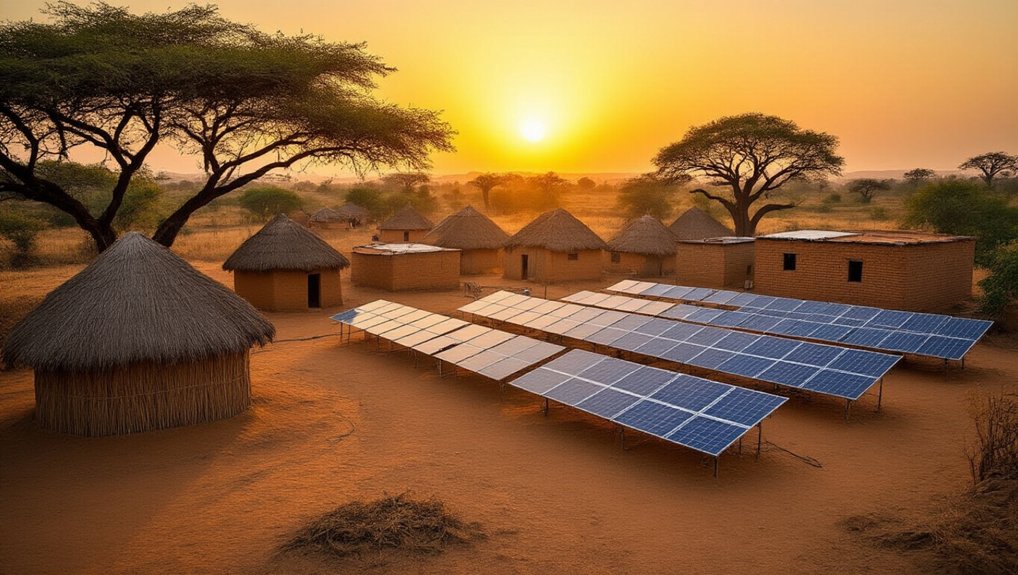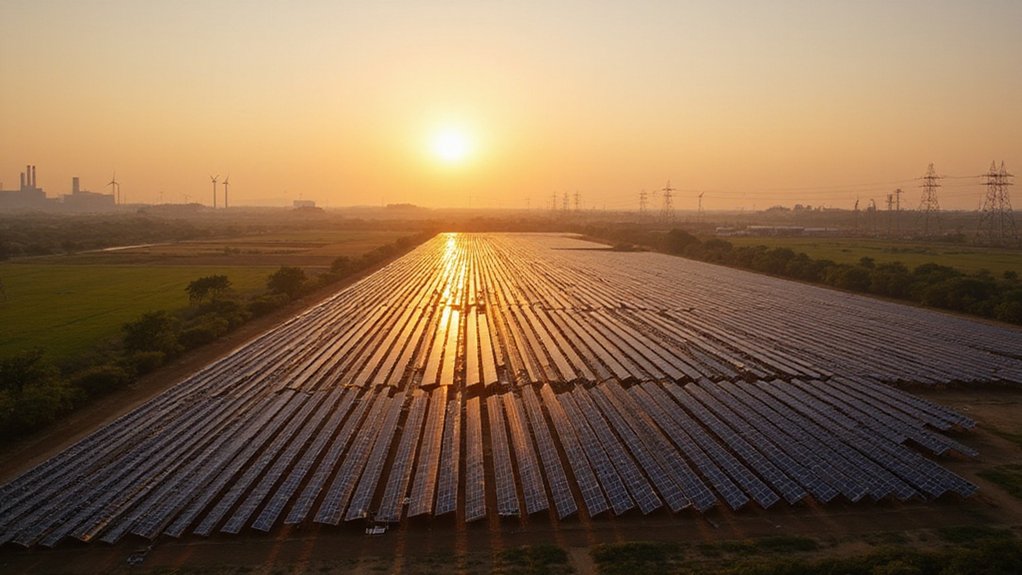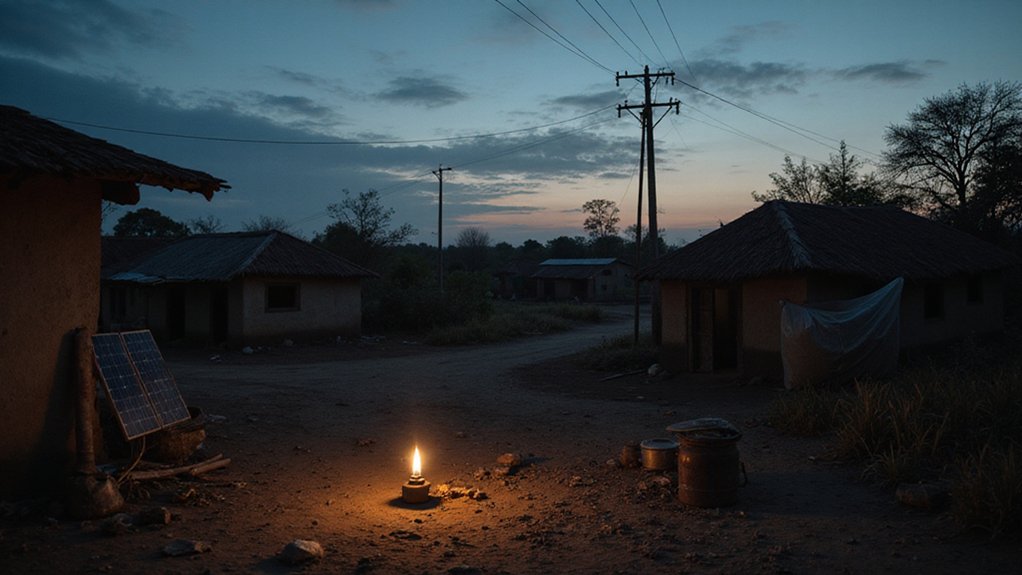A Senegalese village finally dumped their smoke-belching diesel generators for solar panels, bringing clean electricity to 1,200 residents. The switch happened fast—less than a decade from energy poverty to solar abundance. No more praying the generator survives dinner. With 3,030 sunny hours annually, solar makes perfect sense. Rural electrification hit 58% in 2023, and these panels run 25-30 years with minimal fuss. Senegal’s solar capacity reached 245 MW by 2022, and the momentum keeps building.
How did a West African nation transform from energy scarcity to solar abundance in less than a decade? Senegal’s renewable energy capacity hit 460 megawatts, with solar power claiming nearly half that pie. Not bad for a country where electricity was once a luxury.
The numbers tell a story of rapid change. Solar capacity reached 245 MW in 2022, growing steadily since 2017. With 3,030 sunny hours annually and solar radiation hitting 8.3 kilowatt-hours per square meter daily, Senegal’s basically sitting on a goldmine of free energy. Someone finally noticed.
Wind power’s not sitting idle either. At 159 MW, it represents 35% of renewable capacity. Together, wind and solar achieved a 23% share in electricity generation by 2021. That’s real power, not just paper promises.
Here’s where it gets interesting. Independent producers generate 73% of grid electricity. The government’s not doing all the heavy lifting – private money’s flooding in, betting on Senegal’s energy future. Smart move, considering the country aims for universal electricity access by 2025 and wants renewables to hit 30% of the energy mix.
Rural villages are ditching diesel generators for solar panels. Makes sense. Why burn expensive fuel when the sun shows up every day for free? The solar panel installations will continue providing clean electricity for 25-30 years with minimal maintenance. The government’s revising its rural concession model, trying to speed up electrification in remote areas. About time. The rural electrification rate already reached 58% in 2023, proving that progress is more than just urban myth.
The policy framework’s evolving too. The energy development policy that guided progress from 2019-2023 is getting an update. A new version for 2024-2028 launched consultations in July 2023. Bureaucracy moves slowly, but at least it’s moving.
Senegal’s Plan Sénégal Émergent dreams big – emerging economy status by 2035. With renewable energy jumping from a pathetic 10.42% in 2015 to 30% of installed capacity by 2022, they might actually pull it off. The country’s 17.7 million population stands to benefit from this energy transformation, as reliable power becomes a reality rather than an aspiration.
The transformation’s real. Villages once dependent on diesel now run on solar. Kids can study after dark. Businesses stay open longer. It’s not rocket science – it’s just capturing sunlight. Sometimes the simplest solutions work best.
References
- https://www.afdb.org/en/mission-300-africa-energy-summit/accelerating-africas-energy-transition/senegal-energy-fact-sheet
- https://www.pvknowhow.com/solar-report/senegal/
- https://iea.blob.core.windows.net/assets/f9450799-68eb-4b17-b49d-59f9d59feaf1/CountryProfileSenegal.pdf
- https://www.macrotrends.net/global-metrics/countries/sen/senegal/renewable-energy-statistics
- https://gasoutlook.com/analysis/senegal-well-positioned-to-achieve-energy-transition-report/







